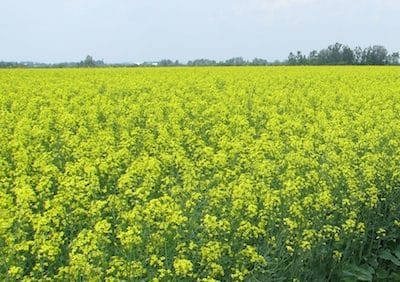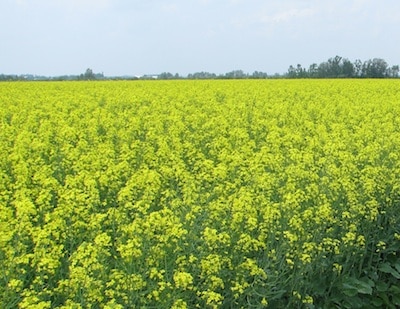Improved moisture in some regions has extended flowering. Some fields have been at “full flower” for what seems like weeks. Highly variable crops may also be at full flower or their “most yellow” — other terms for 50% flower — for longer than typically expected. This does extend the sclerotinia stem rot risk. But that “risk” may still not be high enough to warrant a fungicide spray — given the risk was so low before and that late applications tend to have a reduced benefit for yield.
The fungicide window to manage sclerotinia stem rot closes at 50% flower. (See specifics for each product in the table below.) Keep in mind that the odd year, these late applications are more effective than early applications, especially if moisture needed to promote apothecia development and spore infection didn’t come until later on.
50% flowering is when:
—The crop is at its “most yellow.”
—There are more than 20 open flowers on the main stem. In this case, include aborted flowers and developing pods as “open flowers.”
—Side branches are starting to flower.
—If significant petal drop has occurred, canola is probably at or past 50%. First petal drop is around 30%. It just takes a few days to go from 30% to 50%.
—You may notice signs of sclerotinia infection down in the canopy around rotting petals.
Late in the window, the choice to spray when conditions seem favourable often comes down to the grower’s gut and approach to risk. Would the grower feel better spending the money and spraying, or saving the money and not spraying? Some growers may approach this by spraying half a field and using the experience as a way to learn more about sclerotinia management.
Caution with late applications. Applications after 50% flower are not on fungicide labels, and may be inside the preharvest interval for some fungicides. (See the table below for PHI for each product.) Second, late applications are not as effective. After 50% flower, most of the flowering is on side branches. These petals tend to drop onto upper leaves and side branches, causing minimal damage to the main stem. However, if the crop lodges, infection on side branches can spread to main stems — but this is not that common in in today’s lodging resistant varieties.

Further reading:


